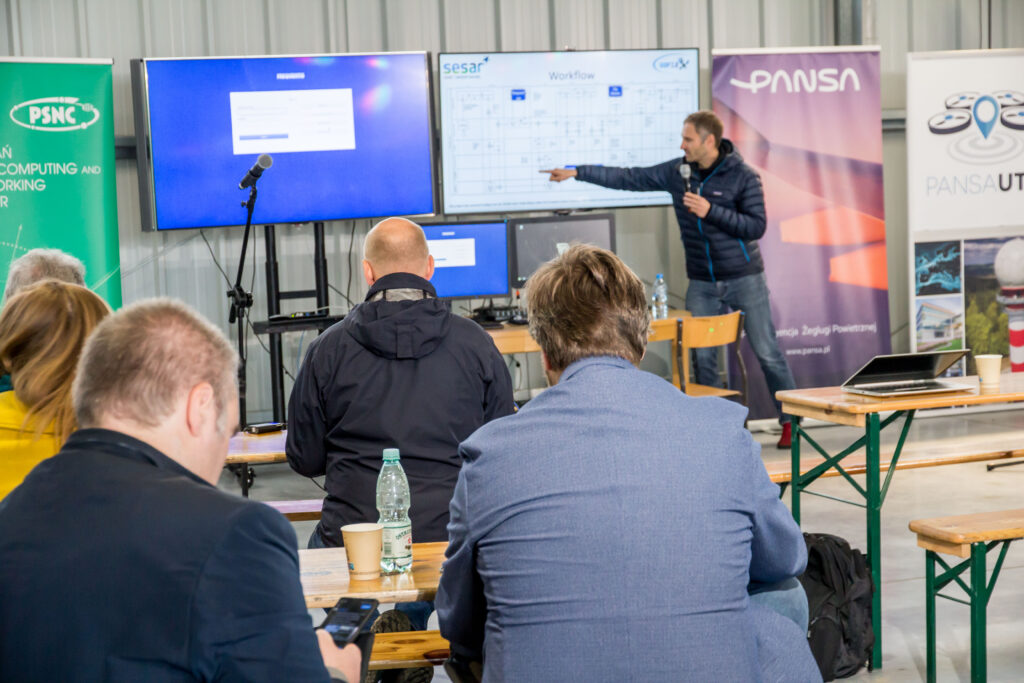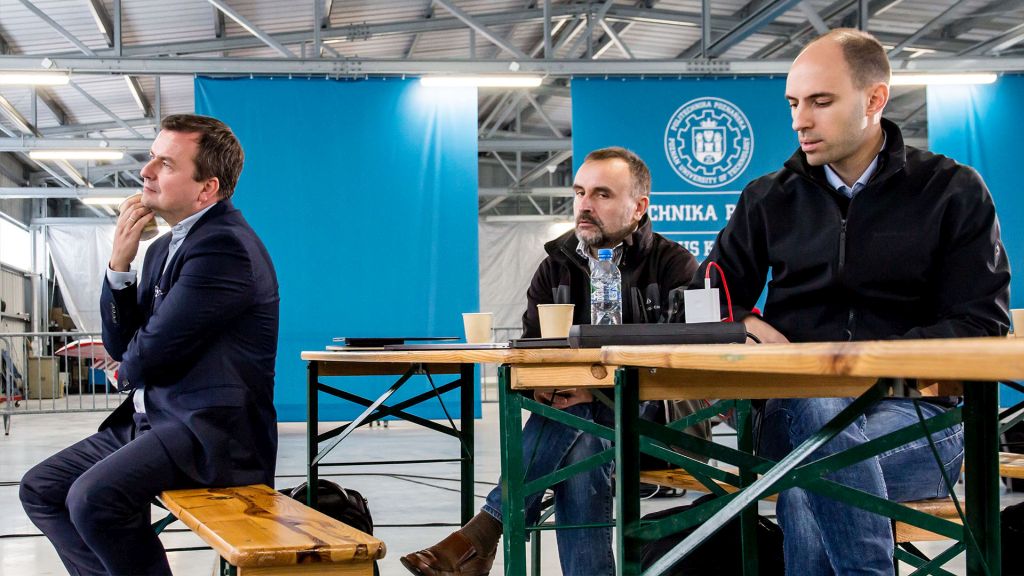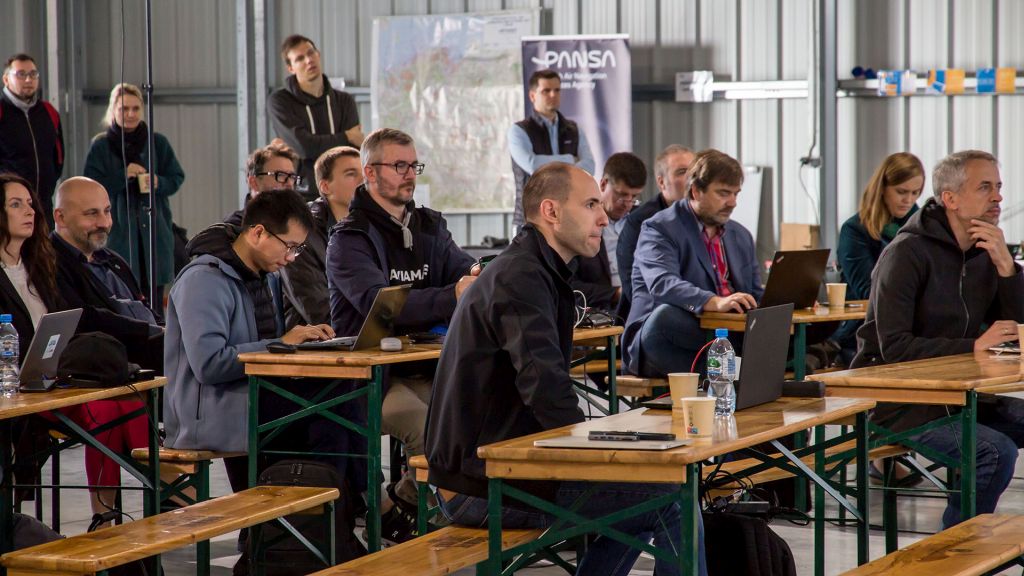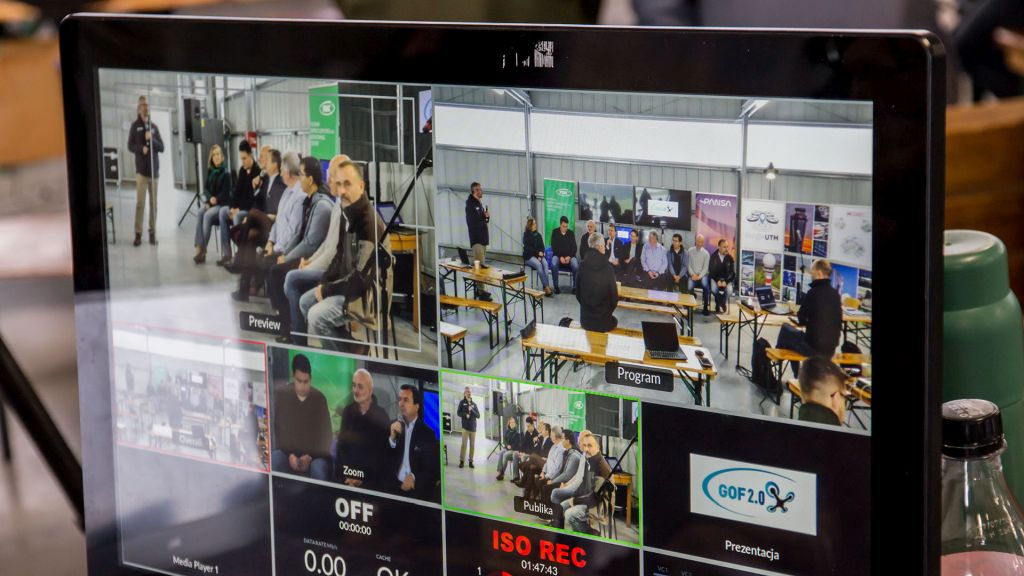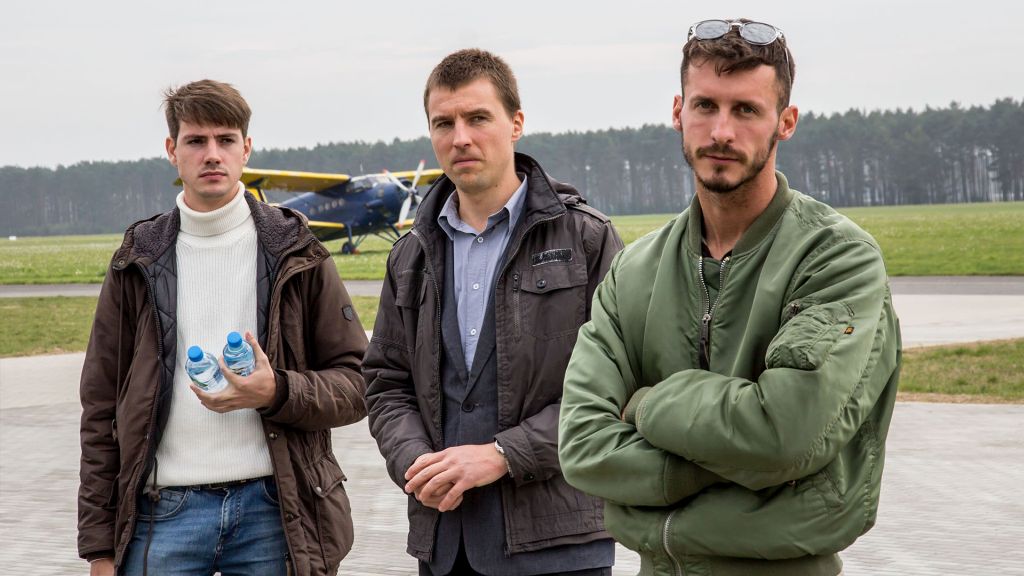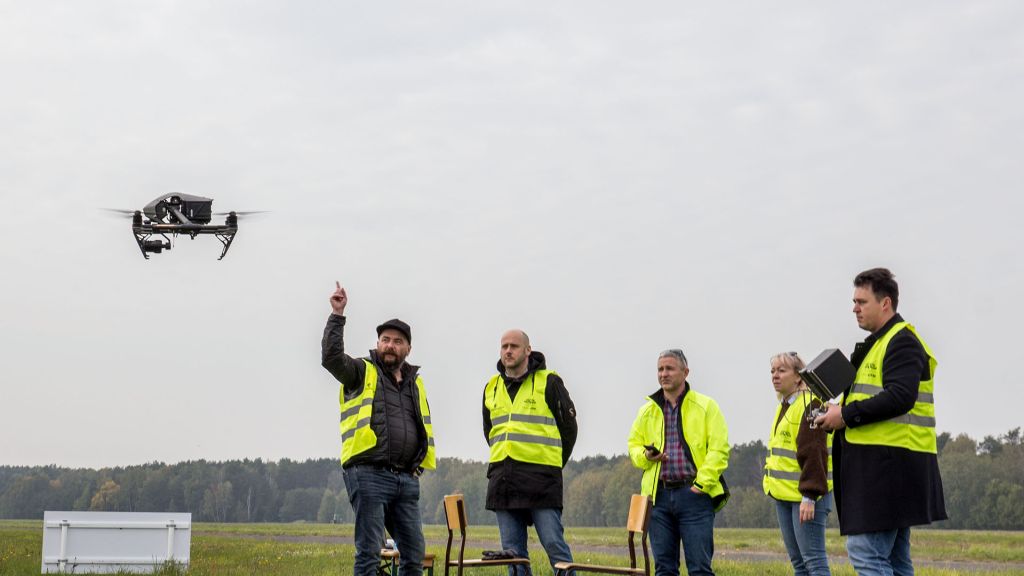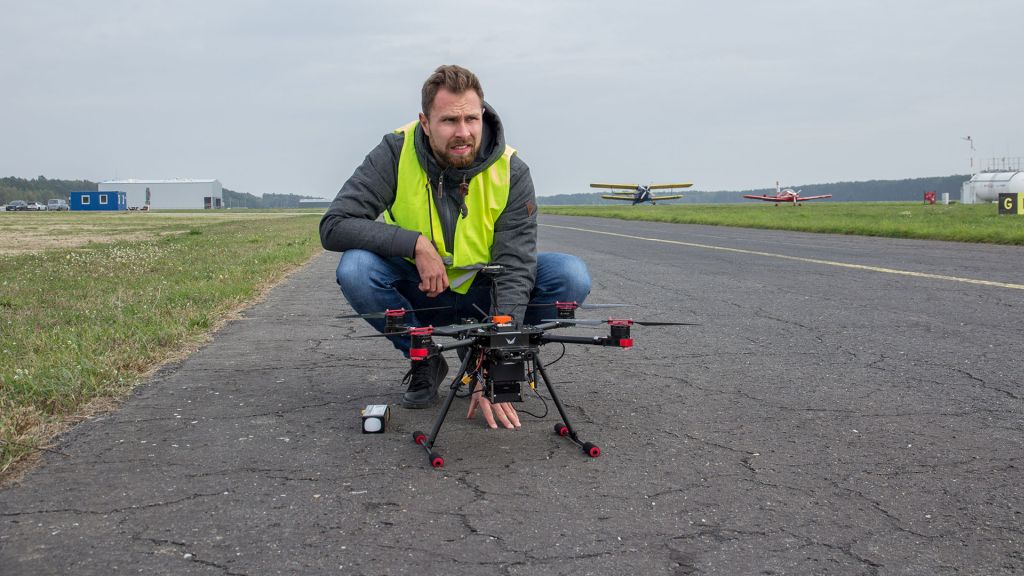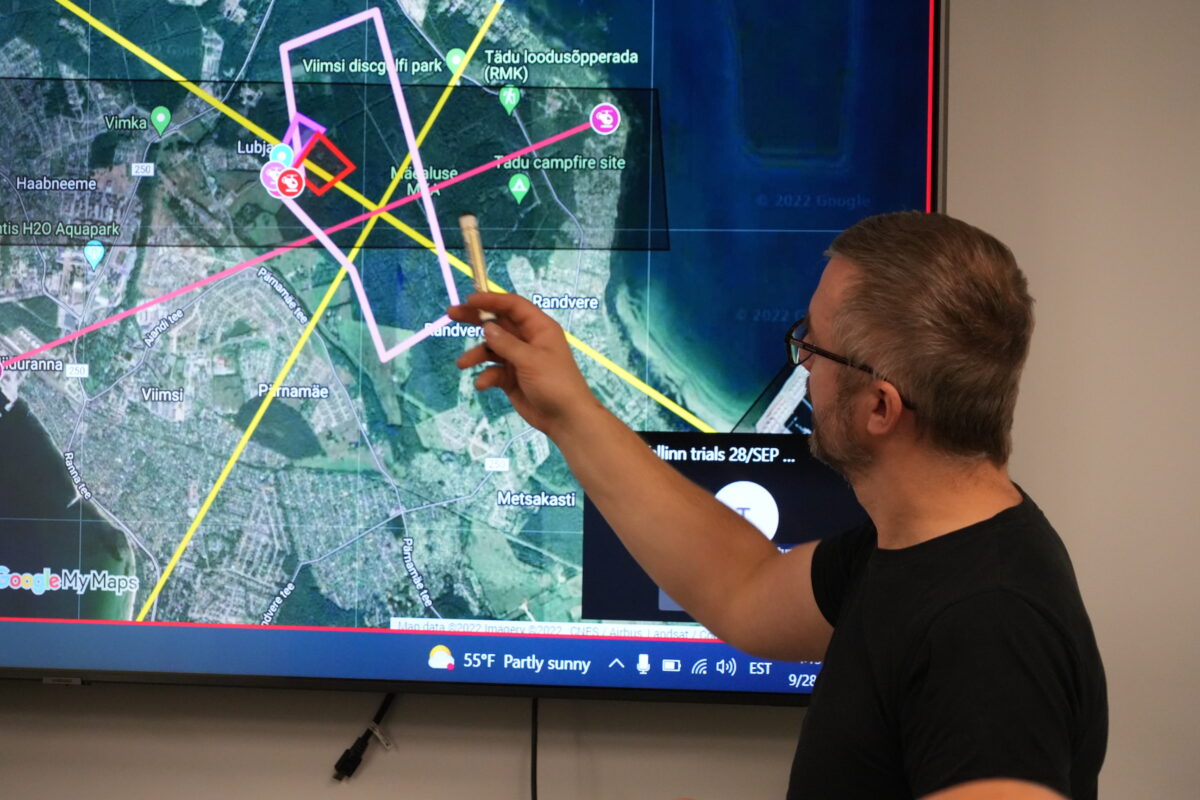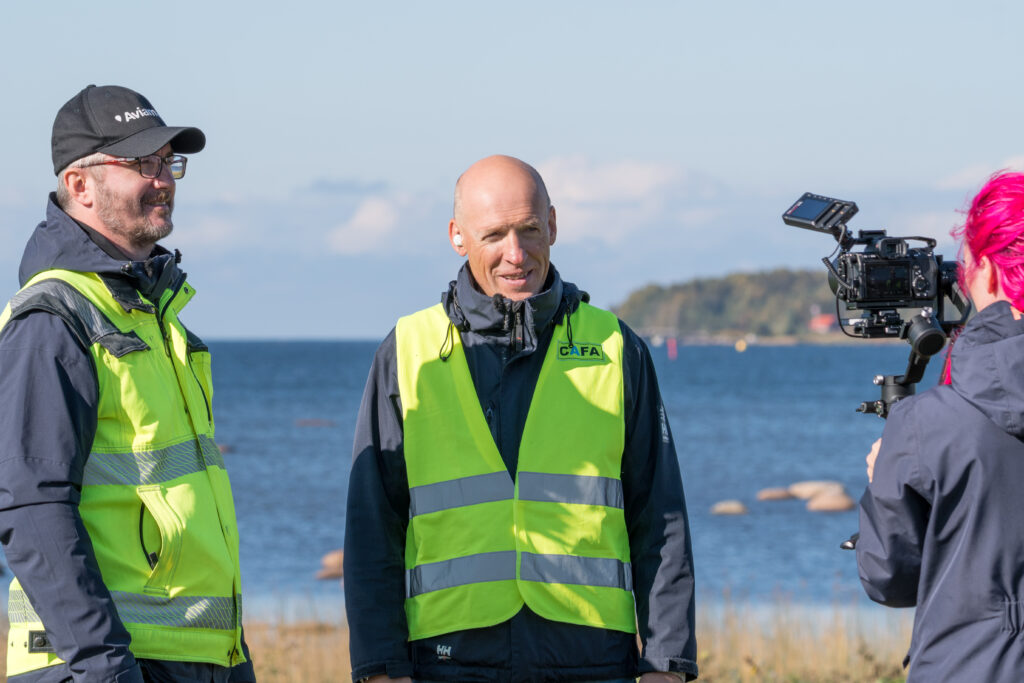White Paper
Validation of Integrated Multi-stakeholder Architecture for UAS Traffic Management
GOF 2.0 Integrated Urban Airspace
The number of air operations over cities is expected to increase over the next 5-10 years. Already now, manned and unmanned aircraft share the skies at low level with helicopters and drones operating in mixed airspace over cities and elsewhere below 500 feet. GOF2.0 demonstrated a unified air operation traffic management with high levels of automation serving both manned and unmanned aircraft in a safe, interconnected, distributed, interoperable, efficient, scalable and environmentally optimized manner. Highly automated separation assurance in dense airspace – specifically in areas where urban mobility and aerodrome traffic is expected – is becoming a critical capability to efficiently manage a unified airspace. Integrated trajectory management service based on flight plan information and real-time surveillance combined with a digitally connected environment provide the basic safety net for all aviators.
The main objective of GOF2.0 was to build on GOF USPACE project and other SESAR projects to validate the orchestration and operation of available state-of-the-art COTS components and services to create a dynamic operating environment for manned and unmanned aircraft to operate safely in a shared airspace along with the provision of enhanced safety net/deconfliction functionalities to maintain separation between aircraft and to lower air and ground risks.
GOF 2.0 is managed by the SESAR 3 Joint Undertaking in an effort to deliver solutions for U-space, the European Commission’s initiative on the safe and secure integration of drones in European airspace.
This project has received funding from the SESAR 3 Joint Undertaking under the European Union’s Horizon 2020 research and innovation programme under grant agreement No 101017689.


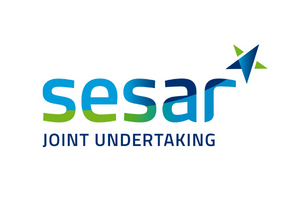
Read about GOF2.0 Trials
The SESAR 3 Joint Undertaking is an institutionalised European partnership between private and public sector partners set up to accelerate through research and innovation the delivery of the Digital European Sky. To do so, it is harnessing, developing and accelerating the take-up of the most cutting-edge technological solutions to manage conventional aircraft, drones, air taxis and vehicles flying at higher altitudes. The SESAR 3 JU partnership brings together the EU, Eurocontrol, and more than 50 organisations covering the entire aviation value chain, from airports, airspace users of all categories, air navigation service providers, drone operators and service providers, the manufacturing industry and scientific community. The partnership also works closely with the regulatory and standardisation bodies, notably EASA and Eurocae, as well as key stakeholders, such professional staff organisations, the space and military communities and global partners.
Estonian Air Navigation Services (EANS, Lennuliiklusteeninduse Aktsiaselts) is a next generation air navigation services provider, headquartered in Tallinn, Estonia. We provide safe and efficient air navigation services together with air traffic management consultation and training services. We are well integrated into international air navigation services community and shaping the future of air traffic management within European Union. Coming from one of the worlds most advanced digital societies, gives us the strength, knowledge, and expertise to make the digital transformations in air navigation industry real. Together with our 200 employees we are designing innovative and sustainable integrated airspace, via dynamic cross-border FINEST collaboration with our neighbours in Finland. We are one of the drivers of the safe airspace integration of unmanned aerial vehicles within the Single European Sky Initiative Gulf of Finland (GOF) 2.0 and developing unified air traffic management in Estonia. Our remote tower technology is one of a kind and enables us to control air traffic at several aerodromes simultaneously from one working position, ensuring high quality and safe services even in poor weather visibility conditions. EANS is a state-owned public limited company under the jurisdiction Ministry of Economic Affairs and Communication of Republic of Estonia.
Airbus Urban Mobility GmbH was founded in May 2018 in order to take our exploration into cutting-edge commercial urban air mobility solutions and services to the next level. We are exploring how recent technology advancements provide mobility solutions and services – from battery capacity and autonomy to electric propulsion – that can help drive the development of new kinds of aerial vehicles (eVTOLs). Airbus Urban Mobility focuses on better connecting people by bringing the safety, convenience and joy of flight to city inhabitants. To make this a reality, we’re architecting all pieces of the urban air mobility domain. Our approach includes building and bringing together all the relevant components—technology, business models, city integration, infrastructure development, and airspace management – to take urban transport into the sky. In doing so, we can ensure maximum societal benefits for urban communities worldwide.
Aviamaps Ltd is modernizing manned and unmanned aviation with a unique real-time aviation map platform and easy-to-use flight planning and airspace management tools. Aviamaps combines static airspace data with live supplements, NOTAMs and AUP/UUP data. Platform also visualizes drone geozones, weather, aircraft traffic and more. Flight announcements make it possible to communicate with other pilots and making aviation safer. Aviamaps is targeting to be the “google maps” of aviation.
CAFA Tech (Estonia) is providing:
1. Automated drone systems with cellular (4G/5G) communication
2. Autonomous and tele-operated mobile robots for ground maintenance, surveillance and logistics
3. Computer Vision Systems for analysing drones´ /robots´ sensors and cameras data feeds in near real time. CAFA Tech is participating in EU project 5!G Drones (2019-2022) where CAFA is leading the Trials task force. In 5G!Drones project CAFA Tech is developing automated UAV system with 5G communication module for delivering parcels, IoT sensors etc.
The CAFA 3D map supports BVLOS drone operations planning with the mobile network coverage data. From 2021 CAFA Tech is participating in the EVOLVED 5G project, to develop and test robots and 5G MEC based applications for Factory 4.0 solutions.
Dimetor is a software company bridging the data gap between communications service providers (CSPs) and the aviation eco-systems. Through its world-leading platform AirborneRF, they help provide supplementary data that is critical for safe BVLOS drone operations. AirborneRF focuses on (a) the 3D corridors in space that have sufficiently good connectivity for drone operations (e.g. for networked remote ID, command and control, payload communication), and (b) the population density for ground risk assessment, based on anonymized cellular mobility data. Developed by experts in mobile communication networks, aviation and drone technology, AirborneRF also provides live notifications from the CSP networks in case of any issue during flight operation may occur. Dimetor’s software has been deployed worldwide, including Australia, Switzerland, Netherlands, the United States. Visit www.dimetor.com and www.airborneRF.com for more information.
Droneradar Sp. z o.o. is a technology provider for PansaUTM. Droneradar developed mobile application, supporting building full aeronautical awareness across Drone community, two-way non-verbal communication (CDDLC – Controller Drone Data Link Communication) and also unique algorithm for judging possibility of the flight. Droneradar is daughter company of dlapilota.pl Sp. z o.o. Polish General Aviation portal and aeronautical data publisher, established in 2002. Currently, Dronereadar activities are focused on autonomous flights, automation of processes between UTM and ATM world, CIS interfaces standardization. Droneradar is active on European and National legislation level supporting many standardization organizations.
EHang (Nasdaq: EH) is the world’s leading autonomous aerial vehicle (AAV) technology platform company. Our mission is to make safe, autonomous, and eco-friendly air mobility accessible to everyone. EHang provides customers in various industries with AAV products and commercial solutions: air mobility (including passenger transportation and logistics), smart city management, and aerial media solutions. As the forerunner of cutting-edge AAV technologies and commercial solutions in the global Urban Air Mobility (UAM) industry, EHang continues to explore the boundaries of the sky to make flying technologies benefit our life in smart cities.
Fintraffic ANS is responsible for managing the use of Finnish airspace as well as providing air traffic control services at airports in Finland. En-route services include area control services in Finland, airspace management, aeronautical search and rescue and air traffic flow management. Our technological air navigation services maintain and develops all navigation, communication, surveillance and monitoring systems related to en-route services, such as the air traffic control and radar systems required for flight surveillance. Our customers include airports, the commercial aviation industry, the Finnish state’s aviation operations and military aviation, general aviation and pilot training schools.
Frequentis, headquartered in Vienna, is an international supplier of communication and information systems for control centres with safety-critical tasks. Such ‘control centre solutions’ are developed and marketed by Frequentis in the business sectors Air Traffic Management (civil and military air traffic control, air defence) and Public Safety & Transport (police, fire brigade, ambulance services, shipping, railways). As a global player, Frequentis operates a worldwide network of branches, subsidiaries and local representatives in more than 50 countries.
Products and solutions from Frequentis can be found in over 35,000 operator working positions and in approximately 140 countries. Founded in 1947, Frequentis considers itself to be the global market leader in voice communication systems for air traffic control with a market share of around 30%. In addition, the Frequentis Group’s AIM (aeronautical information management) and AMHS (aeronautical message handling) systems, as well as GSM-R systems for Public Transport are industry leading global solutions.
The shares of Frequentis AG are traded on the Vienna and Frankfurt Stock Exchange under the ticker symbol FQT (ISIN: ATFREQUENT09). In 2019, the Frequentis Group had about 1,850 employees worldwide and generated revenues of EUR 303.6 million and EBIT of EUR 17.2 million.
Poznan Supercomputing and Networking Center (PSNC) affiliated to the Institute of Bioorganic Chemistry of the Polish Academy of Sciences is an internationally known node of the European Research Area in the field of IT infrastructure of science and an important R&D center in the field of information and communication technologies (ICT). As a development centre of e-Infrastructure, PSNC designed and built the Metropolitan Network POZMAN, High Performance Computing Center and the national broadband network PIONIER, maintained and still developed by PSNC.
PSNC is an important element of global research and development base, implementing projects mainly under the European Union Framework Programmes, but also supporting R&D initiatives with more than a thousand partners from around the world. PSNC has participated and participates in 215 such projects, coordinating 20 of them. For over a quarter century of its activity 282 research and structural projects have already been implemented in the Centre (coordinating as many as 38 of them), which is one-seventh of all PSNC projects.
PSNC has been operating with a mission: “Integration and development of information infrastructure for science”. The potential of the infrastructure and the several dedicated laboratories, including a fleet of unmanned aerial vehicles, are the basis of innovative applications in agriculture, logistics or education. The possibilities are being expanded with the new experimental and laboratory space at the airport in Kąkolewo with dedicated data collection and processing services and a connection to the PIONIER network infrastructure.
Every day Polish Air Navigation Services Agency ensures safety of passengers in more than 3,000 flights over Poland. We have one of the biggest airspace in Europe: over 334,000 km2. Before coronavirus pandemic almost a million overflights, approaches, take-offs and landings in 2019 were supervised by almost 600 air traffic controllers employed in Polish Air Navigation Services Agency, as well as around 260,000 General Aviation flights under watch of the Flight Information Service (FIS). Polish Air Navigation Services Agency is also the only institution in Poland training and employing civil air traffic controllers (ATCOs). We also provide Flight Inspection Services for monitoring the proper operation of ground-based navigation aids from the air. Our air traffic controllers are supported by advanced technology. Over 200 devices located throughout Poland guaranteeing safety of air traffic within the Polish airspace: air-ground communication systems, RNAV systems, ILS – DME systems supporting smooth and precise landing in low visibility, radars. PANSA also builds and develops tools for efficient management and planning of airspace: CAT (Common Airspace Tool) – that ensures accurate and efficient management of the airspace, PANDORA – that supports controllers and other operations personnel with the wide spectrum of a real time aviation data, raising their situational awareness, PANSA UTM – system for UAV flight coordination, TRAFFIC – Track Advisor for Flight Information Concerns, which provides the ATM system information from flight plans, as amended and complementary messages.
Robots.Expert (REX) is a consultancy focused on unmanned aviation. REX help companies adopt new drone technology in their business, often through live demonstrations to jump-start understanding of the potential. Robots.expert main focus in the Nordic and Baltic countries is to advance a strong network with drone stakeholders in Europe. REX’ personnel have a strong background in UAS, technology and strategy, as well as in project management to support the tasks of facilitating demonstrations and to manage large projects or consortia. Robots.expert is the ambassador in Finland for EIP-SCC Urban Air Mobility.
Threod Systems (Estonia) specializes in developing, producing, and operating Unmanned Aircraft Systems (UAS) that are designed for information collection and exploitation in wide range of applications. Threod supports the decision-making process on every level of command. Threod Systems is known for rapid product development and tailor made UAS solutions for small multirotors, fixed-wing UAV platforms, and in-house developed subsystems. Threod System designs, develops, manufactures and operates Unmanned Aircraft Systems and subsystems for information collection, surveillance and other tasks related to unmanned sensing including VLOS and BVLOS operations.
Unmanned Life is a multi-award-winning British Company founded in London enabling the seamless orchestration of autonomous robotics. The platform acts like one central intelligent brain that powers different robotics use cases in Industry 4.0 and Smart Cities.
Unmanned Life´s technology allows large organisations to integrate and orchestrate seamlessly different type of intelligent robots with their systems. Thanks to a strong partnership with leading telecom operators, the Company is able to address a large pool of enterprise customers looking for such solutions from their telecom partners. This has made Unmanned Life a strong brand in the emerging 5G, Robotics and Autonomy technology scene.
The Company is changing the way autonomous robotics is used by industry by developing the first Autonomy-as-a-Service software platform powered by Artificial Intelligence and 5G. Unmanned Life is working with leading global Companies such as TELUS, Telefonica, Volskwagen Group, BT, Etisalat, Deutsche Telekom.
Unmanned Life is also part of leading R&D programmes on 5G, Robotics and AI at both the UK and European level, working in multi-million dollar industrial projects with companies such as Port of Bristol, Cellnex, Siemens, Airbus, Nokia, Orange and Thales.
Vaisala is a global leader in weather, environmental, and industrial measurements. Building on over 80 years of experience, Vaisala provides observations for a better world, with space-proof technology even exploring Mars and beyond. We are a reliable partner for customers around the world, offering a comprehensive range of innovative observation and measurement products and services. Headquartered in Finland, Vaisala employs approximately 1,900 professionals worldwide and is listed on the Nasdaq Helsinki stock exchange.






























